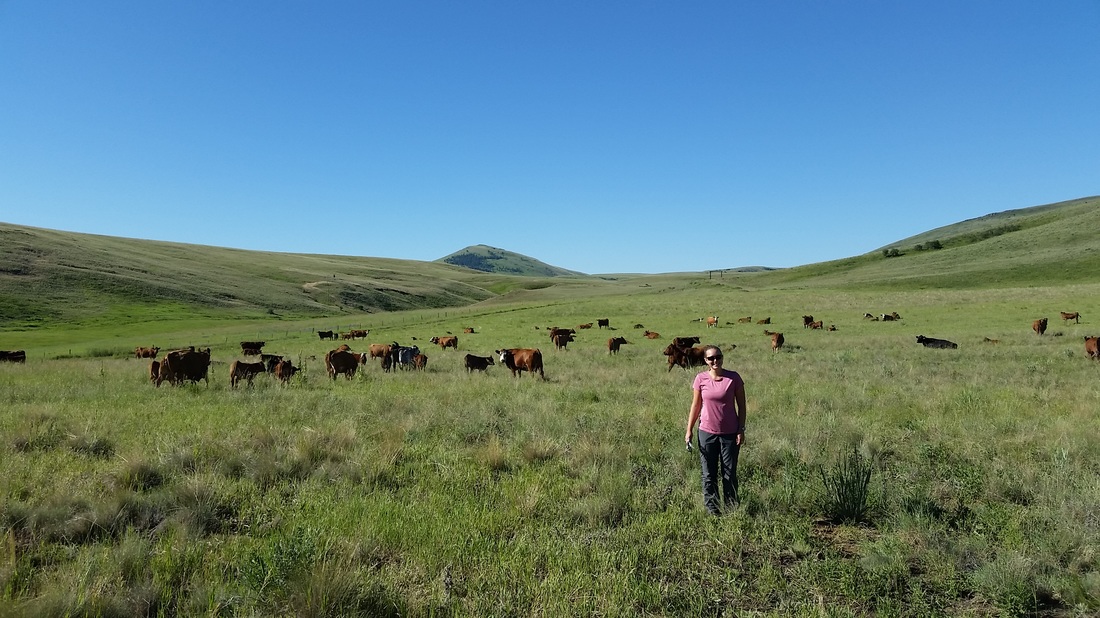Grassland Restoration Effects on Native Bees and Spiders
Throughout the West, many native grasslands have been degraded – overgrazed, overtilled, burned or overrun by invasive weeds like Medusahead and cheatgrass, which by itself is estimated to have taken over more than 150,000 Western acres.
As interest in and efforts to restore these degraded grasslands expands, so does the research into the effects of restoration. But that research was often limited.

Lauren Smith on the range
A lot of times after a restoration effort, what was monitored were the mature plant communities or endangered vertebrate species,” explained Lauren Smith, a doctoral student at Oregon State University. “There was little done looking at the invertebrates in restored grasslands, but those species provide important ecological services.”
To fill this gap in scientific knowledge, Smith used a Western Sustainable Agriculture Research and Education Program grant to study the effects of grassland restoration on native bee and spider communities in arid areas of eastern Oregon.
“These species play an important role in pollination and pest management,” she said. “And other insect species help cycle nutrients, mix up soils and play a large role in the food web.”
Smith collected bees and spiders in 18 different plots – six degraded areas, six native areas and six restored areas. During the study, one area, outside Boardman, Oregon, burned in a wildfire.
“It’s very rare to have data from before and after a wildfire,” said Smith, who is scheduled to graduate in June. “We were fortunate to have two years of data from before the fire to look at.”
Restoration of these sites often involves killing the cheatgrass with an herbicide, then replanting native grasses and plants using range drill seeders and by hand.
“It takes a long time for native plants to recover in this arid country,” she said. “The invertebrate communities seem to recover more quickly than the plant communities.”
Smith and her colleagues are still analyzing the three years of data they collected – always an issue when you capture more than 12,000 bees and 3,000 spiders and need to identify them as part of your research. But she does have some preliminary findings.
Restored sites had a greater abundance of bees and spiders than degraded sites, but less diversity of species than native sites. There was also higher insect diversity on the margins of crop fields.
Some of the differences were illuminating. In degraded sites overrun by cheatgrass, which forms a dense thatch that shades out other plants, Smith found few web-spinning spiders, who often prefer taller plants to get their webs in the air. In their place, she found a greater abundance of ground-dwelling spiders that ambush prey rather than trap it in a web.
When the data analysis is finished, Smith as her Oregon State colleagues will develop a low-maintenance protocol for restoring field edges and the unplanted corners of center-pivot-irrigated fields so growers can get the pollination and pest-management benefits these species provide.
“Some of the recommendations will be to avoid tilling these areas, because many of these species nest underground, and leaving in place specific plants or flowers bees use,” she said. “And if you want to replant, chose flowers that bloom throughout the season.”
See a blog about the work at http://grasslandrestoration.weebly.com/